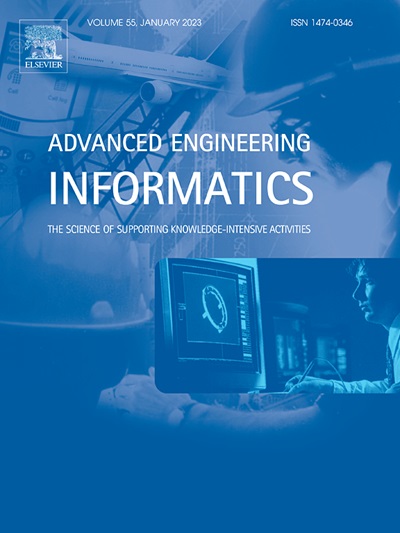EEG-based floor vibration serviceability evaluation using machine learning
IF 8
1区 工程技术
Q1 COMPUTER SCIENCE, ARTIFICIAL INTELLIGENCE
引用次数: 0
Abstract
The emergence of novel floor systems has made the vibration serviceability evaluation, conducted through testing and finite element simulation, a time-consuming process that struggles to accurately reflect the user experience. Even when occupant feelings are taken into account, the evaluations may be subjective. This study introduced electroencephalogram (EEG) to grade the ranges of peak accelerations (ACCs) and maximum transient vibration values (MTVVs). To achieve this goal, a supervised learning algorithm, the eXtreme Gradient Boosting (XGBoost), were adopted to conduct binary classification to recognize the threshold of peak ACCs and MTVVs. Accelerometers and an EEG acquisition instrument were utilized to simultaneously capture the ACC dataset and the EEG of volunteers. Characteristic EEG time-domain curves were then obtained by averaging the preprocessed curves corresponding to specific ranges of peak ACCs. The vibration-induced event-related potential components, P50 (the positive potential component with 50 ms latency) and N200 (the negative potential component with 200 ms latency), were identified based on the averaged EEG curves. Additionally, the peak amplitude and peak latency were calculated using cognitive neuroscience methods. The study results suggest that the potential for floor vibration-induced components is around 10 μV. Lastly, XGBoost was utilized to identify the thresholds of different ranges of peak ACCs and MTVVs using EEG time-domain and frequency-domain features. The classification accuracy according to MTVV using XGBoost can reach up to 99 %. This study quantified human perception of floor vibrations based on EEG and optimized peak ACC and MTVV threshold for the cold-formed steel floor vibration serviceability evaluation.
求助全文
约1分钟内获得全文
求助全文
来源期刊

Advanced Engineering Informatics
工程技术-工程:综合
CiteScore
12.40
自引率
18.20%
发文量
292
审稿时长
45 days
期刊介绍:
Advanced Engineering Informatics is an international Journal that solicits research papers with an emphasis on 'knowledge' and 'engineering applications'. The Journal seeks original papers that report progress in applying methods of engineering informatics. These papers should have engineering relevance and help provide a scientific base for more reliable, spontaneous, and creative engineering decision-making. Additionally, papers should demonstrate the science of supporting knowledge-intensive engineering tasks and validate the generality, power, and scalability of new methods through rigorous evaluation, preferably both qualitatively and quantitatively. Abstracting and indexing for Advanced Engineering Informatics include Science Citation Index Expanded, Scopus and INSPEC.
 求助内容:
求助内容: 应助结果提醒方式:
应助结果提醒方式:


